The ultimate guide to your eco-friendly & Zero Waste travel kit
You want to travel light, compact and purposeful. But that’s not enough! Here are some considerations and recommendations for your ethical, eco-friendly and zero waste travel kit.
You want to support innovative social entrepreneurs, and have a positive influence on fellow travellers and locals to help create awareness of solutions out there to make this world a better place. You want to minimize your carbon footprint, your trash trail and the number of chemicals polluting the environment and your body. You want the best for your health AND make a positive difference in the world that you call your playground. You want to collect memories and not things. You do need to pack something at some point.
But you’re busy. You don’t have the time to sort it all out. You left the packing part to last minute and now you realize it would be good to have done some research so you can travel with a positive impact
What impact do you actually make with the travel gear you take with you? How eco-friendly is your kit?
Warning: Long post! Find more plastic-free travel solutions in my lastest #PLASTICFREENOMAD campaign. Disclaimer: No brand is paying me to mention them. Recommendations for the eco-friendly travel kit are based on my own investigation and testing.
We have become such a convenience society. I’m sure we all have the right intentions. But we have accustomed to obtaining the easiest and cheapest thing available without really questioning or investigating the road this ‘thing’ has taken to get to us. Or the road it takes when it’s not ‘ours’ anymore. That’s where this post may come in handy! I did some leg work for you.
Almost every day someone asks me ‘what I use for this’ or ‘where I got that from.’ I wrote a huge blog on what you can do to travel to be part of the solution. I encourage you to read that one as well. This article is purely focused on the packing department and gives my recommendations on eco-friendly travel gear.
I spend a lifetime searching, exploring and finding ways to travel with minimum environmental and positive social impact. It’s a continuous journey. Since such a part of your contribution (or destruction!) starts with packing preparation for your next adventure, being well equipped and prepared on the road allows you to create positive change in many ways. Here’s a shortcut for those who don’t have time to shop hop and do the research but do like to support brands that love the planet as much as we do.
Where there is demand there is supply so by supporting the change maker businesses, instead of the lobbying profit making guys conveniently presented to you on page 1 in google or eye height on the selves, we can make a huge difference.
Let the dollar be your voice and reflection of your values of love for the planet! (<- Click to tweet that)
People often say you are what you eat. I resonate with that. But not just that. You are what you buy, use, put, wrap, and present yourself with. Responsible travel (&living) is not just about hitching a sailing boat ride or going on a hiking trip. Responsible travel is also about how you pack, plan and prepare, and where. It’s a reflection of your believes. Whether you go around the world or to the market around the corner thinking ahead makes a huge difference. We all still use plastic bags not because we want them. We know it’s not the way to go by now. We simply forget to bring them in the first place. As my dad always said. ‘Een slimme meid is op haar toekomst voorbereid’ (literally translated as ‘as a smart girl, has her future prepared’). While he is usually talking more about my pension ;), he has taught me to be well prepared for the unexpected. And he still shows up with a piece of rope (‘always handy’! haha), when I head out for another adventure. My years of travel have taught me what to expect and what is of use in the crazy adventure lifestyle.
So what to pack for the benefit of your own as well as the planet’s health?
Here’s what I have found as personal and planet health-minded and useful travel items. Some things, especially eco-friendly travel toiletries, are super easy to make yourself. Other items are from brands that share the same values and care for our playground as much if not more than profit. These brands produce cruelty free, child-labour free, low carbon, zero/low chemical, durable, thoughtful and with PASSION for play and planet. This blog is a work in progress of the learning process. I keep learning, creating and exploring for the best solutions out there! Your suggestions for the eco-friendly travel kit are welcome!
Here’s a video I made where I walk you through the Zero Waste Travel Kit I’m travelling with:
Here are links to the different items I mention in the video.
General tips for your Eco Friendly, Ethical, Zero Waste travel kit
- Be creative and inventive. See what you can re-use, borrow, swap, buy second hand (on sites like Preloved) or make yourself. Don’t buy new if you don’t have to.
- Keep whatever you use, eat or pack as close to nature. Think, what would grandma do?
- Pack light. It saves whatever transport mode you use, and yourself loads of energy. Pack purposeful for the destination you’re going to. What do you really need? With having layers you only need 1 jacket, 1 sweater, and a few shirts. If you end up packing heavy, and realize on the spot this is not convenient, like most girls do (I’m still guilty!), give your clothes away. There are people who can use it.
- Stuff made from recycled-something is better than new. It helps to create awareness. BUT, it’s not the solution! Eventually, it still adds to the trash pile. Rethink – refuse – reuse – reduce – recycle – and if no other option… waste.
- Buy from local providers to shorten the supply chain, which includes transportation energy cost, use of packaging, and benefits for those down at the bottom.
- If you order online, kindly request to use little packaging and without plastic tape. Demand minimal or better NO packaging in general wherever you go. Buy online near you to avoid a package going from plane, to ship, to ferry, to truck, around the world. Also, try to buy everything with one shop and in one go, instead of having packages sent from different places. When in Holland, choose a company with a delivery service by bicycle!
- Save a tree and some money and travel with e-books instead of books. Find them at Amazon, Bol. Travel guides like lonely planet have gone digital too. Or check out my recently launched ocean adventure travel series: Ocean Nomad.
- Support the small entrepreneurs and go against mass consumerism. We live in a demand-driven society. Help the good brands, without lobbying power and big advertisement budgets, to climb up the ladder. Demand plastic free and toxic free where you can. This way you say no to oil drilling, carbon emissions, and yes to a cleaner way of life. Then governments step in!
- Don’t just buy something because a company says it’s ‘eco-friendly’, ‘sustainable’, ‘organic’ or ‘green’. These have become fashion words. Certifications are a step in the right direction but don’t just take that for granted either. When a brand is a certified B-Corporation, it’s using business as a force for social, environmental, and economic good. So that’s a step in the good direction. Read labels, read stories, ask questions, and find out.


- Reduce and eliminate your plastic trail. Plastic never ever disappears! Your toothbrush used 10 years ago, is still out there, somewhere. Together with Climate change, I believe plastic pollution is the greatest challenge of today. We’re still producing more plastic every day and it never dissolves. Help to turn the tide by choosing travel gear made from natural fibers and material. A huge amount of crude oil and chemicals are used to produce plastic, polyester, nylon, synthetic stuff for your backpack, clothes, technical gadgets. Then there’s the waste side. Organic cotton are good options for clothing. Sustainably sourced wood, bamboo, coconut fibers are other options out there as an alternative to plastic crap. Bioplastics are not the greatest solution either.
- If you buy toiletries, buy in bulk to minimize package materials.
- Sometimes organic is more expensive. Realize it’s expensive short term! In the long run, it will be healthier for you and/or the planet because you don’t need to buy replacement or fix it, whether it’s your travel bag or your body!
- As budget traveller as you and I may be, cheaper is not always better. Go for the durable and degradable option. It will be cheaper in the long run.
Having the above said. I did some research for you. Here’s what I have in my eco-friendly travel kit and what I recommend. I’ll keep revisiting this blog to add awesome environmental, ethical, and eco-friendly travel gear finds to the list. And share your finds in the comments!
Ocean friendly Sunscreen
(I wrote an extensive article on biodegradable sunscreen and recommendations for reef safe sunscreen here.)
Average sunscreen has tons of chemicals affecting corals and fish. Using biodegrable sunscreen is not only better for the environment, it’s much better for you too. Some tourism destinations even prohibit sunscreen to protect nature. It’s that destructive! So what to do?  Do everything else right before applying sunscreen in the first place. Protect yourself from the sun with a cap, clothing and go for outdoor action in the morning or later afternoon. Take the chair in the shade. Apply sunscreen for when you have to. And make your own sunscreen! Here’s how.
Do everything else right before applying sunscreen in the first place. Protect yourself from the sun with a cap, clothing and go for outdoor action in the morning or later afternoon. Take the chair in the shade. Apply sunscreen for when you have to. And make your own sunscreen! Here’s how.
There are more and more biodegradable sunscreens on the market. Finding one that does not come in plastic is the biggest challenge! The ones I have found to be biodegradable AND plastic free are: Balm Baby, Butterbean, Avasol, Sea and Summit, and Stream2Sea (discountcode OCEANPRENEUR for 10% off). Second best option I find the Sunscreen of The Ohm Collection. I have tested it and a full day at sea in the sun in the tropics didn’t get me sunburned! The crème smells amazing and is 100% natural. Unfortunately, it’s bottled in plastic and since it’s a small brand not easy to get near you. Still, this is a way better choice for the health of the oceans and yourself than the big sunscreen brands.
Check the ingredients of sunscreen (as well as your other cosmetics). Every brand can claim to be ‘Reef Safe’ or ‘ Eco’. Is it really? Check 1: can you pronounce the ingredients?
Eight ingredients recommended to avoid when buying sunscreen (2):
- Oxybenzone: used in over 3,500 different sunscreens worldwide
- Octinoxate / Octylmethoxycinnamate used in ‘long lasting suncremes.
- Octocrylene
- 4-mehtylbenzylidene: 4MBC. This is banned in the U.S., but not in Canada and parts of Europe
- Octisalate
- Homosalate
- Avobenzone
- ethylhexl methoxycinnamate.
I wrote an extensive article on biodegradable sunscreen and recommendations for reef safe sunscreen here.
Chemical & plastic free toiletries
(I wrote an extensive article on plastic and chemical free soap and shampoo here.)
All the fragrances, chemicals and things the big corporations put into our shampoo, shower gel, make-up, mosquito spray end up in our waterways and mess with your hormones. How many words on the back of your shampoo you can’t pronounce? right. Google them or read more about it here and here.
Books I highly recommend reading on the harm of chemicals, detox and natural cosmetics
Almost all toiletries also come in plastic packaging and are thrown ‘away’ once finished. A quick rough calculation and I realize I’ve around added to 360 bottles of just shampoo to the trash pile. That’s just me. And that’s only shampoo. Plastic never EVER disappears. Save yourself and the ocean from some toxics and plastic pollution. The best thing you can do is make your own toothpaste, shampoo, moisturizer, facial cleaner or mosquito spray. It’s easier than you think.
DIY toiletries
Below are simple versions of Do It Yourself cosmetic care. You can go as advanced as you like and add all sorts of essential oils to the below but the basics work, are cheap, locally available in many places around the world, healthy, natural and have zero impact on the environment and the amount of chemicals in your body. Try it out.
My DIY toothpaste: baking soda, coconut oil, and charcoal (yes, the black stuff!). You can add some peppermint or eucalyptus for a more ‘toothpaste’-ish feel. My mouth has never felt so clean! Here’s a How-To video I made on how to make your own ToothPaste.
DIY Conditioner: Coconut oil*, olive oil, argan oil are all great nutrition for you hair.
Mouthwash: Coconut oil* (rinse for 5 minutes. It’s called oil-pulling and gives you the cleanest mouth ever). Try it! *A note on coconut oil. Get organic, certified coconut oil. If you go to the tropics, buy it locally but make sure it’s cold pressed for the optimal benefits and least environmental impact on the production. Learn more about the coconut crisis here and here.
Deodorant: Baking soda or a crystal stick (which is heavier so less attractive when travelling).
Facial serum: jojoba oil, rose oil (source this in Spain if you’re there), and coconut oil are great!
Facial wash: Oats (which you find in practically every country so easy to top up locally) and water. Mosquito repellent: lemongrass, citronella, teatree, eucalyptus, and cinnamon. Eating loads of garlic also keep the mosquitos away ;).
Ear infection prevention: 25% vinegar, 75% water. Put it in your ears after snorkeling/free(diving) and you won’t ever have an ear infection or swimmers ear again. DIY not your piece of cake? There are some wonderful entrepreneurs out there who made it for you.
When in Holland, this is where I source ingredients for sunscreen and DIY cosmetics: Natural Heroes
Best finds on biodegradable soap & shampoo
‘Look for the zero’ to check if the product has microplastic in it or not. Dr. Bronners 18 in 1 soap is a useful eco-friendly travel toiletry. You can use it for everything. Use this for travel laundry soap, shampoo your hair, body wash, dishes, anything! Get the largest version to minimize the waste. Though the bottle is said to be biodegradable, it still cost energy to produce the bottles. With a bar of soap or shampoo you don’t get any packaging at all.
Favourite natural Deodorant: Ohm Safe deo powder (expensive but lasts forever! And you won’t ever stink again). The crystal sticks also work but they are ‘heavy’ for travel. Just baking soda also works great.
A good natural toothpaste is hard to find. And when I find it, it’s tubed in plastic. The research by natural cosmetic lady Nadine (with track record!) educated me to stop using mainstream toothpaste forever. Here is how I make my own toothpaste.
Mosquito repellent. It’s often said that you absolutely need DEET to prevent to mosquitos from biting you. It’s not just mosquitos not liking this. Our bodies don’t either. I rather have a mosquito biting me than putting DEET on my body. It’s toxic chemical crap. A good find on biodegradable mosquito spray: Honest bug spray, as close to homemade as it can get. I haven’t tried it, since I’m a lucky bastard that doesn’t get bitten. ever! but the ingredient list is approved by mother nature.
Learn more about plastic free soap and shampoo travel solutions in my latest post.
Other lifesavers in my toiletry bag
Teatree oil (great antiseptic for cuts, bites, weird bumps). A bamboo plastic free toothbrush! (8 tooth brushes/per year x 30 = 240 toothbrushes are out there that only I just used (+the plastic wrappers they are packed in). Bamboo ToothBrush US Bamboo Toothbrush NL/DE.

Has it been ‘mine’? Now it’s the oceans’…
Toothpicks. In many countries, toothpicks are individually wrapped in plastic. Ridiculous! Be prepared and bring your own or look what’s around in nature. I find the needles of pinetrees perfect for toothpicking:) . A plastic-free wooden hairbrush, plastic free hair ties.. For a plastic-free razor, get a steel one. Haryali has a stainless steel razor for women, and men! The next section is for the ladies only. How to tackle our monthly menstruation madness on the road?
Environmental friendly menstruation madness
An estimated 11,000 tampons or pads women use in a lifetime. Developing countries don’t even have tampons or they are ridiculously expensive. Besides that, most tampons are bleached which is not really a chemical you want to put into your body. I’m happy to have found out about THE alternative: A menstruation cup! You bring it in like tampon, you can dance and adventure like with a tampon. But you only need ONE. You can reuse it. Over and over again. There are dozens of menstruation cups out there. I use the Lunette menstruation cup. It’s simple and the best chemical free and ethical option I could find. Mooncup is another one I found to have good reviews. If you prefer the pads, these can be re-used as well. Girls, this is a must. Try it! Please ditch the tampon. If you can’t, at least use the organic tampons! Menstruation CUP (NL/DE) Menstruation CUP (UK) Menstruation CUP (US)
Plastic-free travel packaging
Where to pack things IN? It’s A LOT of plastic these days and it’s not really practical to carry around dozen glass jars, is it? Are there luggage options made from recycled materials? Plastic convenience has become the norm. But we GOT to change the tide on our plastic consumption. Society has made it hard on us to avoid it. We don’t even know anymore what’s made of plastic these days. But there’s great alternatives out there. First, I suggest you look at what you already got on hand for packing things. Packing cubes and travel organizers are very handy. All the packing cubes I find are synthetical though (Why is this bad again?) and expensive. Any bag does the job as well so just see what you already got. For shampoo, I re-use empty pill bottles, or whatever boxes or packaging I can find. Ask friends and family for this as well. It gives you more options and helps increase awareness. A few years ago my mum made me a few cotton storage bags which I still use as travel organizers (one bag for the shirts, one for the shorts, one for the electronics, one for the bikini’s, and one for the underwear) (Thanks mum! <3). Not everyone is as fortunate to have a super-sowing-mum. But it doesn’t have to be complicated. You can even sow an old T-shirt so you don’t have to buy any fabric. If you don’t have the time or possibility to make something yourself, get a few (organic!) cotton bags you can organize your packing in. Also, keep a spare for when going shopping!

The result of a 2-minute beach clean up
Stainless steel food containers are useful to store food items (I travel with teas and a seed mix for the omega’s ;)). Life without plastic webshop (US) and ReUseIt (UK) have created some plastic free storage boxes for your nuts, seeds, teas, picknick stuff. Or get small lightweight stainless steel containers for herbs, spices or your soap.
My toiletries I pack in an Ayacucho toiletry back. It’s light and with different compartments and a hook, super functional. I can’t find it anywhere on the web. I bought it locally. This outdoor brand from Peru, which has a special place in my heart, puts great a focus on responsible, careful sourcing so it’s a good one to support. They sell in Europe and focus mostly on outdoor clothing and camping sleeping gear. I’ll keep my eye out for other ethically produced no plastic toiletry bag options. UConserve snackbags or ReUseIt decompostable resealable bags you can use as a replacement to plastic zip lock bags for foods or liquids you got to get through customs. Etsy has a wonderful collection of creatives and entrepreneurs showcasing biodegradable, plastic-free, wrappers, bags, lunch boxes, and bags.
Low impact – Big purpose Backpacks
What are the options for eco-friendly travel bags? Since I travel more on water than land, to ‘waterproof it’ is quite essential. I travel with an Aquapac 70L duffel bag and 25l waterproof backpack. This brand is very durable. The bags last me a lifetime. Therefore, it’s very unlikely that I will purchase an organically made backpack anytime soon.
For years I’ve also been travelling with a Vaude backpack. Vaude is one of the most responsible outdoor brands when it comes to ethical and low impact production. Other backpacks I’ve seen out there that are made from recycled plastic, organic material: Eco-Gear has technical lifetime warranty sustainably produced backpacks, day packs and laptop bags Ethnotek is worth checking out for travel and laptop bags from ethically sourced handmade textiles. Also Aquapac has a good waterproof laptop bag which I use on my sailing trips. Timbuk2 is another brand worth checking out as an eco-friendly luggage brand. Before you buy, do check out the second hand market that has a lot of backpacks on offer
Travel tech gear and the environment
The buttons I’m typing on are plastic, my phone cover is plastic, my earphones are plastic, and my camera equipment (I use Sony NEX, Go Pro, a travel-friendly tripod and they have plastic items). Thankfully apple is making better CSR efforts these days. My ‘digital nomad office’ is the least planet friendly. I do need my office to produce content like this. How to minimize my impact here? Firstly, by only replacing something when it breaks. So let’s not have it broken down. I protect the gear with waterproof bags, covers and sleeves. When it needs to be replaced, what to replace it with? Second-hand stuff if possible (on sites like Preloved ). There are many hyper consumers out there that buy the latest tech gadget and then just leave it in the closet. Or they want to have the latest Iphone or macbook, and get rid of the ‘old’ one. Take over their shizzle! I got a second-hand LifeProof iphone case. Yes… from plastic. It was like new but for 1/4 the of the price. I already had to ‘fish’ my phone out of the water once (I definitely have lessons to learn in taking better care of tech). But I do have self-knowledge. It was a good investment. It has prevented me from getting another phone. On Amazon you can get second-hand lifeproof cover and other tech things ‘used’ and save it from the trash pile. Bring old tech stuff to dealers that can use the parts. Or sell it. Apple has a recycling program, as well as most other tech brands. Please don’t just throw it ‘away.’ Two good finds on a green laptop sleeve: Greensmart turns waste into laptop sleeves and bags. And Looptworks turn old wetsuits into laptop sleeves. Neoprene has been turned into NeoGreen :). Aquapac has the best waterproof laptop cover I’ve found.The fairphone : the world’s first and only ethical smartphone! Most eco-friendly earphones I’ve found: Organic Affinity.

I came across a TV at the bottom of the sea
All these devices need power to run. Batteries and their acid are the oceans worst enemy. The euro shop around the corner may have a cheap cable or solar power charger, but these things break and will quickly be added to the trash pile. Until we have Elon Musk having solved the battery challenge. The best most durable and responsibly made accessible nature powered charging systems I have been able to find are the solar panel chargers of Goal Zero (Goal Zero US – UK – NL) and the wind charger of HYmini. Put the wind charger on the bike or boat and you’ll be charged in no time. 
Food & health travel kit
Sincea few years I eat plant-based only. I started out for environmental reasons but am now convinced it’s the healthiest decision I ever made for myself as well. Vegan travel is way easier than I ever thought it would be. Since I intend to throw myself into off the grid situations where the nearest shop is hundreds or thousands of miles away, I travel with some supplements in case there’s only junk food (or no food!) around. Staying healthy is a top priority so I have the energy to enjoy and perform to the max in whatever I do, for at least a 100 more years:). Here’s what’s in my vegan travel kit: Spirulina and chlorella supplements. Fish oil and krill oil has been popularized on many blogs. There’s really no need to squeeze dozens of fish and stuff it into a pill. Algae like spirulina and chlorella are amongst the purest and responsible source of omega 3’s. Probiotics. To keep the second brain healthy. Good gut health means good health. Especially during ocean sailing passages fibre intake from fruits and veggies go to a minimum. In case there’s no fibres around (happens especially on boats) a probiotic supplement helps. Tea. I travel with tea. It’s light and makes me happy. I buy loose herbs and use little metal containers or bags a tea storage. In many countries tea bags are individually wrapped. Avoid buying those. Vitamine B12, which is the only thing that a vegan really needs to supplement. A good (natural! – not synthetic) multi vitamin. For when I’m stuck on a boat for too long.
Shops with good assortments of natural supplements are Evolution Organics and GreenPeople, and Vitaminestore (NL) Other useful and plastic-free food travel related items: A spork and A stainless steel mug. The spork is the most powerful tool we can use to tackle climate change. Think about that. People that helped me a great deal to learn about why it’s not just good for the planet but for YOU are: Kimberly Snyder and David Wolfe. They have been studying this for years and years and are good resources. Download e-books on your phone to have the least environmental impact. Amazon has a kindle app, Kobo has an app, Ibooks has an app.
Eco-friendly travel clothes and accessories
What clothing you pack obviously depends greatly on where you’re going. I intend to go mostly to the more tropical areas. My intense love for the frangipani flowers and coconuts pulls me to the tropical zones. There are a few items that I always have with me. I invested in 1 good lightweight wind and waterproof jacket. I crossed oceans with The North Face jacket. It’s very durable and lasts me for years. BUT I’m not recommending this anymore. A recent Greenpeace study showed that most outdoor brands produce their clothing with PFCs for the waterproofing, a highly toxic chemical (causing reproduction problems) that has been found now in the highest snow peaks and rivers. It’s not just The North Face that uses this toxic. Also, Patagonia, Wolfskin, Mammut, Norrona, Selewa and many others have PFCs in their gear. These outdoor brands are aware of it and are taking action towards removing this material. So that’s great! But it has not happened yet. Since it’s an outdoor brand, lead by outdoor lovers, I’m sure their intentions are to do what’s best for the environment. Though it doesn’t really seem like a priority to them. The North Face has set the goal to use ‘only non-fluorinated chemicals in the manufacturing for 2020’. On Detox-outdoor you can check how pollutive your favourite outdoor brand is. Jack Wolfskin, the North Face, Patagonia, Mammut, Norrona and Salewa are no-go’s guys! Vaude, Paramo, and Rotauf are brands showing that PFC-free performance outdoor gear is possible! An awesome warm clothing brand is Hoodlamb.
I also have 1 multipurpose headband/scarf/bandana thingy (from Buff) that made sure I at least have a few unbroken hairs left over after a sailing trip. It’s also great to put around your neck when it’s cold. A good way to environmentally friendly water spray your clothes is with Reppellx, a little finish brand. I’ve tested it personally and the drops are just running off. The amount of flipflops I’ve seen underwater or washed up on beaches is ridiculous. Read more here about flipping the flop! Since I badly sprained my foot last year and I don’t want this to happen again, my favourite alternative these days is just walking barefoot or with proper shoes. THAT makes me feel better. Learn why. One green planet has written a good guide to buying ethical clothing, comparing the different brands that are ok and definitely not OK to buy.
Learn more about Flip Flop Solutions in my latest post to flip the flop.
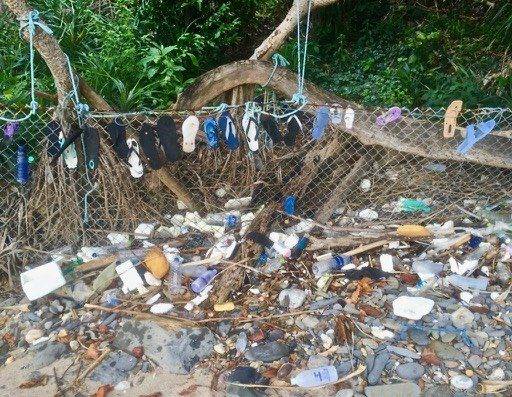
Reusables
By being well prepared you can avoid ‘having’ to accept hundreds of plastic items. Pack (Reusable) Spoon, fork, knife (or spork), straw, bag, refillable bottle and filtered bottle. With this, you can save hundreds of single-use plastic items from ending up in nature. In the western world you may have to pay 10 cents now for a plastic bag. In the developing world, you have to say 10 times NO to not receive one. It allows for a great conversation as well. 
Reusable Straw
(Find here an extensive article on straws and recommended alternatives)
A straw is still a routine add-on in most of the world. It’s in the top 6 of trash found in sea. It’s very wasteful and only used for 15 minutes. By proactively showing up with your reusable straw you can say no to many plastic ones. Especially great when you are in a coconut country. I prefer a stainless steel straw because of their durability. There’s also bamboo straws, glass straws and silicon straws out there. I tried them all and get dirty or break (with my style of travelling which is rather bumby and clumpsy ;)). They are lighter though than a stainless steel one. Read a dedicated post on what’s happening with straws and recommendations for plastic alternatives about straws here.
 I always have a bag with me as well. So you can say no to the plastic bag at the counter. If you do end up with a plastic bag in your hands, re-use it, as long as you can. You can find your favourite at plastic-free webshops like ‘Reuseit‘ and life without plastic. Also, Etsy is a nice platform to find out about creative arts from local and small entrepreneurs.
I always have a bag with me as well. So you can say no to the plastic bag at the counter. If you do end up with a plastic bag in your hands, re-use it, as long as you can. You can find your favourite at plastic-free webshops like ‘Reuseit‘ and life without plastic. Also, Etsy is a nice platform to find out about creative arts from local and small entrepreneurs.
Learn more about straw solutions here.
Refillable drink bottle
(Here’s an extensive article on travel-friendly water filtration solutions and alternatives)
50 trillion amount of plastic bottles are produced every year. It takes crude oil and chemicals to produce them. In most positive scenario 1/3 get’s recycled, which again takes oil to turn used bottles into other plastic items. The rest ends up in nature. Access to drinkable tap water might be normal at home but in many countries buying plastic bottled water has become the norm. It already makes a great difference to have your reusable drinking bottle. At home, at your office, but especially during your travels. They let you refill it for free in places like Flores, or Koh Lipe. Better, go hike to a waterfalls or chop a coconut and fill your bottle yourself.

Average shop in most countries
Learn more about drink water solutions and good finds on ethically produced, plastic-free minimum waste drinking bottles
Filter drink bottle, drops, and/or straw
Trail hiking shoes
I’ve been on the hunt for lightweight, ethically made, durable, multi purpose adventure/outdoor/hiking/ trail running shoes. A lot to ask! And not easy to find. But I’m happy to eventually have found the shoes of Merrell. I have their light weight Women Trail running shoes. These are barefoot shoes so you don’t need to pack socks either. I love them. They are comfi, superlight, durable, vegan, and look cool too. I only got them recently and hope they will last very long. Because still, they have some sort of plastic in it that will never disappear!
Keen is another footwear brand committed to creating solutions in the world we play.
Sunglasses
I’ve only discovered very few brands that 1. protect the eyes and 2. protect the environment as well. Most of the sunglasses are made from plastic, are unethically produced, and don’t protect your eyes whatsoever. Karun is an awesome brand that makes sunglasses from ocean plastic. Though recycling is not really the solution is a great awareness raising tool. Zeal Optics is a high-performance sunglass brand specializing in outdoor sports. Their glasses are made from biodegrable and plantbased materials. Go for a polarised option so you can better see the dolphins swimming at the bow.
Mermaid gear
The single most important thing in my travel outfit these days: my mermaid outfit! The world below the surface is the most magical one to explore. I’ve become a passionate freediver. I’m still diving with the most basic and affordable set I purchased at when I entered the sport. I have the SubGear Steel Comp mask. The most comfortable (&and affordable) freedive mask I have ever tried. It’s made for small faces, low volume and affordable. My snorkel is supersimple. My fins are basic and from plastic (outch!) (Oceanpro). They are very durable and shockproof so easy to travel with. I’m on the lookout for alternatives. The dream is to get a monofin to become a real dolphin. Sooner or later :). I have a stretchy rubber weighbelt to wear on the hips. Weight I borrow or rent locally. As a freedive watch I use the Oceanic F-10 freedive watch to measure the depth. It’s one of the most affordable freedive watches out there with a very long battery life and does the job. If money was no object, I would get this Suunto D4i. Freedive gear for girls is not easy to find. If you find it, it’s black and boring. I’m also happy to have found out about GlideSoul! Finally, a wetsuit brand that brings more colour into the ocean. Their wetsuits are very durable, stretchy, and protect well from the sun.
I have to do some serious investigation into how this is all produced! If you know more about it, or know about eco-concious brands in the (free)diving world, do let me know!
What have you found to be most useful zero waste travel item that has abled you to make a positive impact to your and/or the health of the planet? Or what are you looking for? Leave your comment, hashtag your wins with #plasticfreenomad or @ – me on instagram (@oceanpreneur) when you like to share your eco conscious travel item discoveries and insights! This is an ever expanding and improving blog post, which I’ll keep revisiting to update with the latest. Would love to hear your thoughts!
Disclosure: Everything recommended for the eco friendly travel kit has been personally tested, unless indicated otherwise. As always, opinions are my own. No brand is paying me to write this or to mention them. Some links contain affiliate links. If you’re keen to purchase something, huge thanks if you purchase it via this website (but try to find it locally first!! ;)). At no extra cost to you, orders and bookings through my website give me a little piece of the pie that can help me keep investigating, exploring and creating content about eco friendly travel solutions!
Do you like this blogpost? Share it with your friends and Pin this to Pinterest (Buttons on the right): 
Learn more!












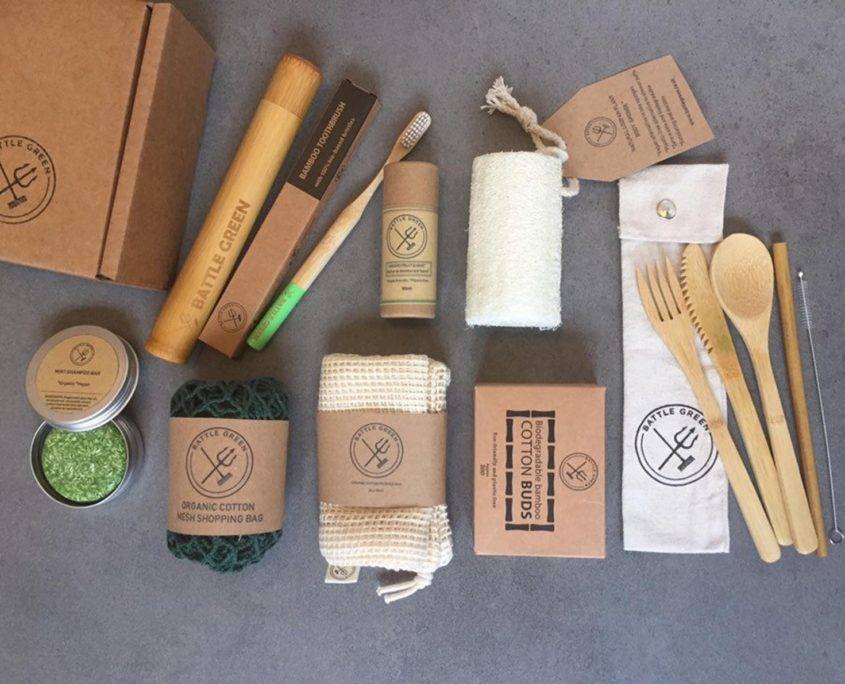





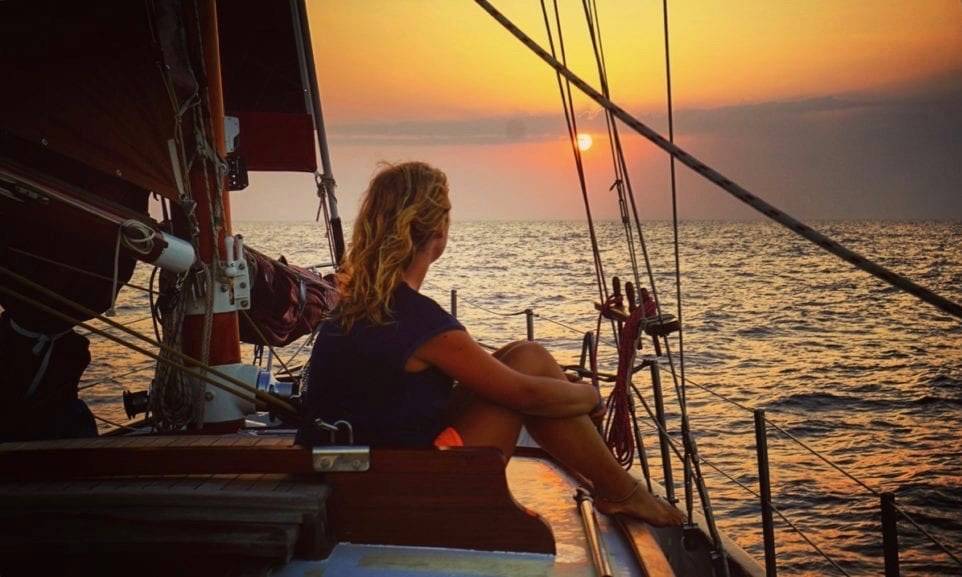






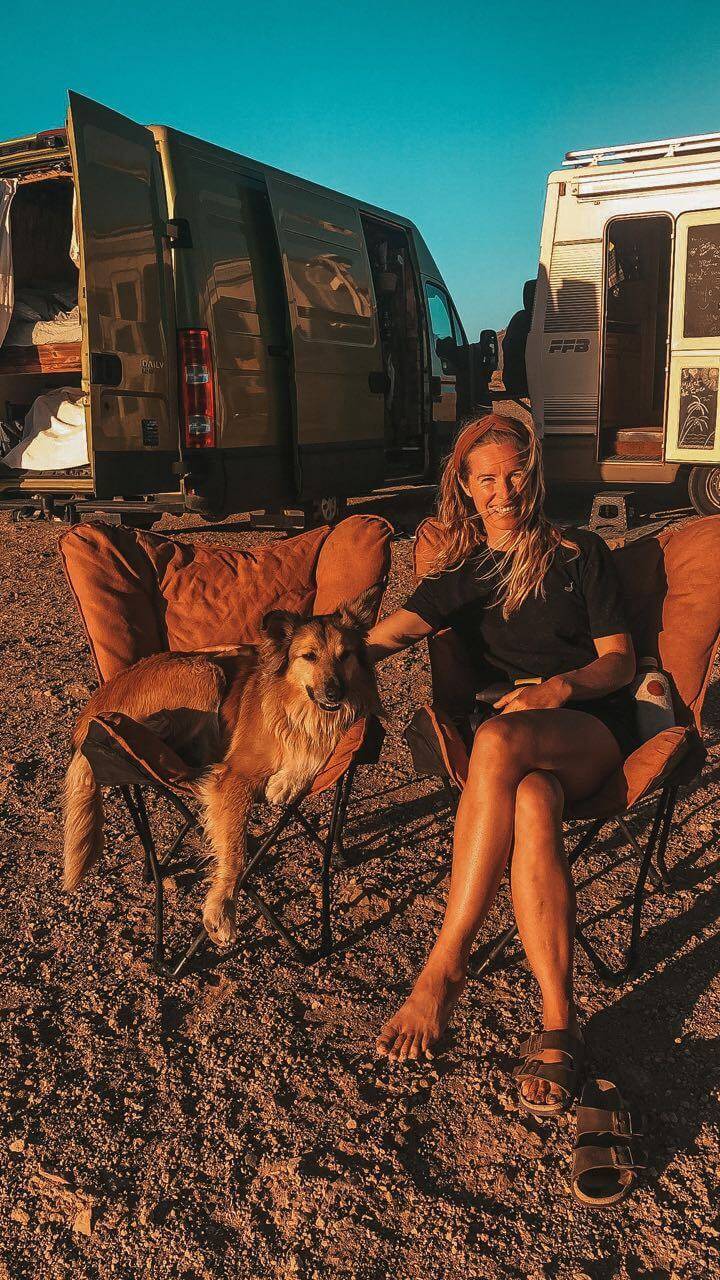
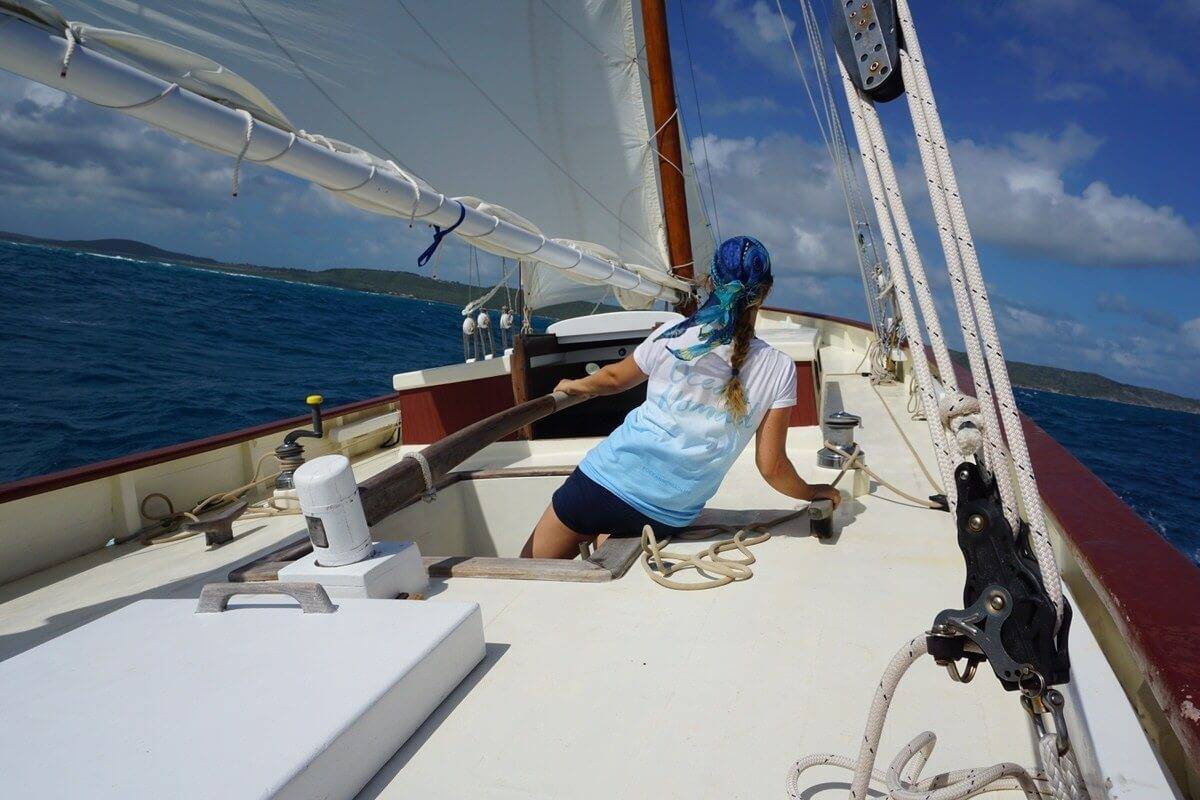





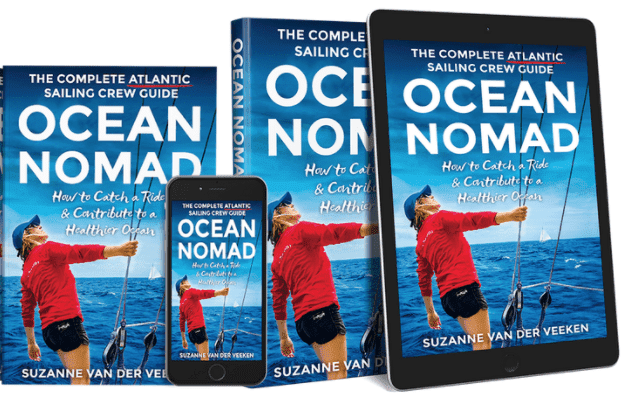

Very thorough, excellent work!
Hi Suzanne, this is a wonderful resource! I write about plastic-free travel, so will be sharing this on my Facebook page.
Thank you LC!! I’ll look up your writing as well! We got to spread the word on plastic free zero waste travel.
I like how to link related products below the content. I am surely buying some of these.
This is so useful! I hate the thought of killing our environment, it’s all we have. As a traveler myself, I really appreciate this post and thank you you for making me more aware of these things.
Thank you Jenny! I’m glad it helped to raise your awareness and hopefully of all those future traveller you’ll meet :) Good luck!
This is a very detailed work! I support anything that helps protect the environment. Kudos to you Suzanne.
Thank you so much Brian! By making conscious decisions as a consumer we can influence what will be on the market tomorrow:)
I loved your article! Really helpful! Thank you for that!
But I have a question about the filter of the filter bottle. You’re saying it last more or less 2 months and it’s made of plastic. It means you have to buy a new filter every two months so buy plastic stuff every two months?
Thanks Amelie!
Yes so it’s not a 100% ocean-friendly and #zerowaste solution yet. I’m looking for alternatives. In situations where there is no potable tapwater and plastic water bottles have become the norm, the filter bottle is the better option. I’m also not aware of a filter recycling program. We must find a way to make it circulair!
Thanks, great post :) I love my water to go bottle to refuse plastic bottles while traveling, but haven´t been able to find a real plastic free reefsafe sunscreen yet (last one claimed to be but they had a plastic lining inside), so I will check out your recommendations. Have you tried the solar charger yet?? Looking for one at the moment.
Kind regards
Jule